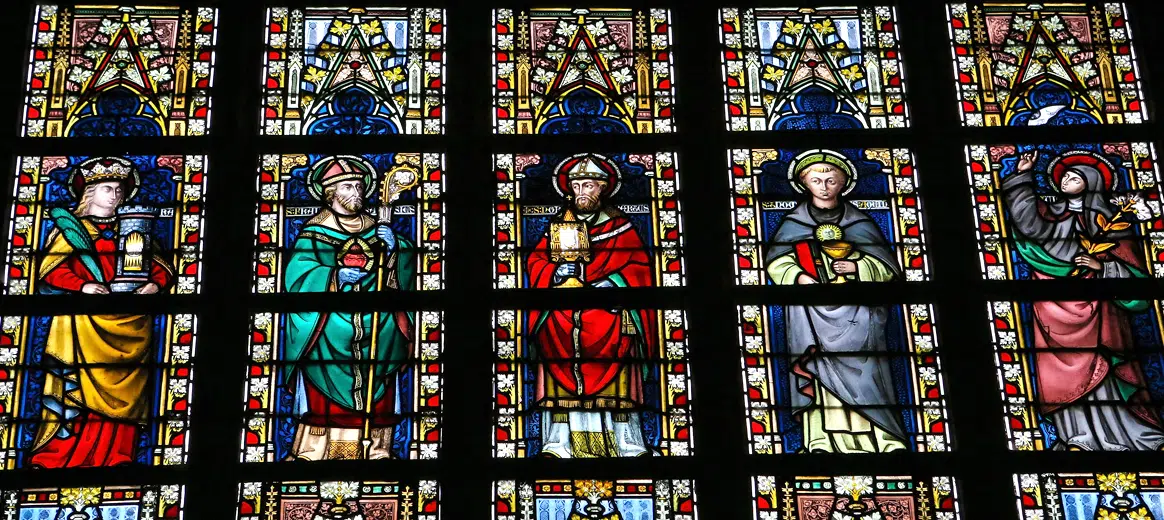St. Catherine of Siena
Feast day: April 29
Siena was Catherine’s hometown, so why is she one of the patron saints of Rome? The answer to that question is an interesting story of a timid pope who ran up against a tough, plain-speaking nun.
Catherine was the 24th of the 25 children of Giacomo Benincasa, a prosperous wool-dyer, and his wife, Lapa. Before she was in her teens, Catherine committed her life to Christ, a decision that set off lengthy quarrels between Catherine, the would-be nun, and her parents, who wanted her to marry a prosperous young man and start a family. In the end, Catherine and her mother and father reached a compromise: she joined the Third Order of the Dominicans, which permitted her to take the vows of a nun and wear the Dominican habit, but live at home and, if she liked, be active in the world.
Initially, Catherine served the hungry, the sick, the dying — all traditional works of charity for women who belonged to a Third Order. But then, in the early 1370s, she began to preach. At the time it was considered improper for a woman to speak in public, and irreligious for a woman to speak in public of sacred things. Catherine’s confessor and champion, Blessed Raymond of Capua, answered her critics saying that she was like the Twelve Apostles, whom Christ sent into the world to humble “the pride of those who regard themselves as wise and learned.” Huge crowds came to hear Catherine, and after her discourse, her audience lined up for confession. The priests who accompanied Catherine could barely meet the demand.
As an unconventional woman of firm convictions, Catherine felt no qualms about correcting nobles, kings, or even the pope. The goal of her life was to see the pope return to Rome where the papacy would be independent again and the Eternal City would be revitalized.
The papacy had moved to Avignon in 1309, when the French king offered the pope protection from his political enemies. In France, the pope was safe, but he was also firmly under the French king’s thumb, and Catherine wasn’t the only Catholic who found that galling.
In the summer of 1376, she traveled to Avignon to convince Pope Gregory XI it was time to come home. Gregory wanted to go. He had been telling himself since his election to the papacy in 1370 that the pope belonged in Rome. But he was hesitant — his advisers (almost all of them French) frightened him with tales of cutthroats and poisoners who would lie in wait for him all along the road. Catherine found it necessary to put tact aside and address the Holy Father in forceful terms. “Courage, Father,” she said, “be a man! I say to you that you have nothing to fear. But if you neglect to do your duty, then indeed you have cause to fear. It is your duty to come to Rome; therefore come.”
To the consternation of the French king, Pope Gregory XI set out for Rome Sept.13, 1376. He took his time — he did not make his solemn entrance into the city until Jan. 17, 1377. But at least he was back— the first pope to reside in the Eternal City in 68 years.
Catherine remained in Rome, too, and died there of a stroke at age 33. She lies enshrined beneath the high altar of Rome’s great Dominican church, Santa Maria sopra Minerva. For her devotion to the Catholic Church and the papacy, in 1886, Blessed Pope Pius IX name St. Catherine one of the patron saints of Rome.
Thomas J. Craughwell is the author of Saints Behaving Badly and This Saint Will Change Your Life.



Learn from the risen Lord